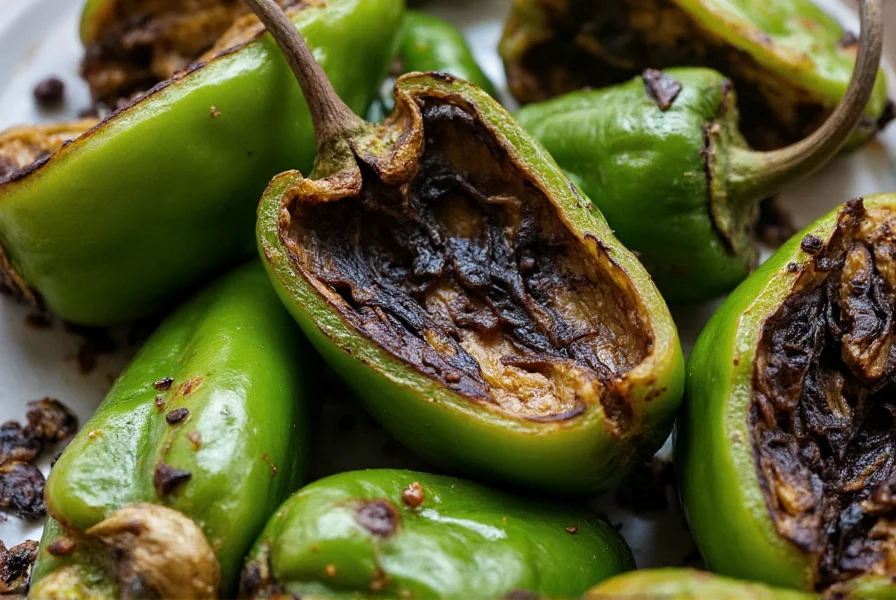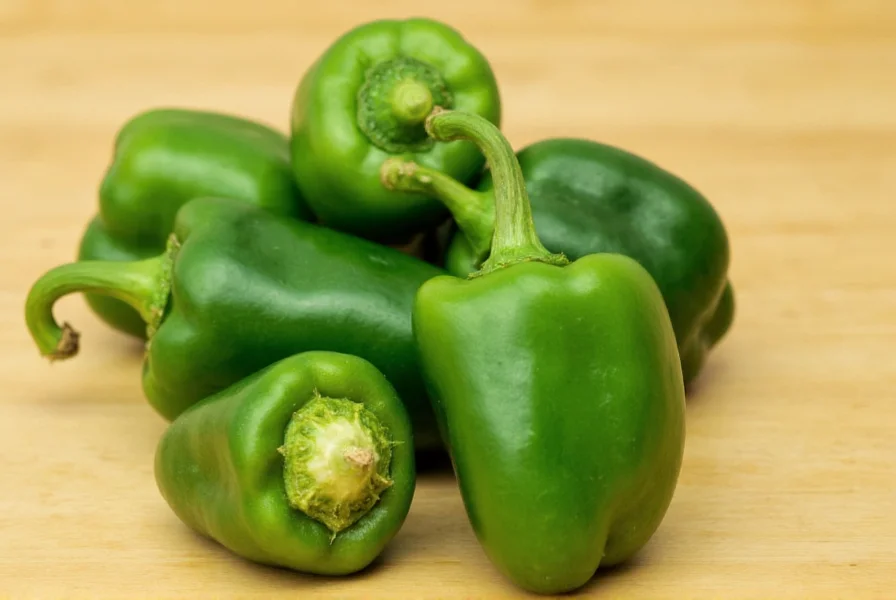Understanding poblano pepper taste characteristics helps home cooks and culinary professionals make informed decisions when selecting ingredients for various dishes. These large, dark green chilies native to Mexico deliver a distinctive flavor profile that sets them apart from other common peppers used in cooking.
Flavor Profile Breakdown
Poblano peppers present a complex yet approachable flavor that makes them versatile in the kitchen. When raw, they offer:
- A deep earthiness reminiscent of mushrooms or roasted vegetables
- Subtle grassy notes similar to fresh bell peppers
- A mild sweetness that becomes more pronounced as they ripen to red
- Very low heat that allows their flavor to shine without overwhelming spiciness
Unlike hotter varieties such as serranos or habaneros, poblano peppers focus on flavor rather than heat. Their Scoville rating of 1,000-2,000 units places them at the milder end of the chili spectrum—about one-fifth the heat of a typical jalapeño. This makes poblano pepper taste ideal for those who appreciate chili flavor without intense spice.
| Pepper Variety | Scoville Heat Units | Flavor Characteristics |
|---|---|---|
| Poblano | 1,000-2,000 | Earthy, mild, slightly sweet, grassy notes |
| Jalapeño | 2,500-8,000 | Grassy, bright, moderate heat |
| Bell Pepper | 0 | Sweet, vegetal, no heat |
| Serrano | 10,000-23,000 | Sharp, bright, significantly hotter |
How Preparation Methods Affect Poblano Pepper Taste
The way you prepare poblano peppers dramatically influences their final flavor profile. Understanding these transformations helps maximize their culinary potential:
Raw poblanos maintain their crisp texture and deliver the purest expression of their natural flavor—earthy with subtle grassiness and minimal heat. They work well in fresh salsas, salads, and as a mild addition to guacamole.
Roasted poblanos undergo a remarkable flavor transformation. The charring process caramelizes natural sugars, creating a deeper, smokier profile often described as richer and more complex. This preparation method significantly enhances what does poblano pepper taste like in finished dishes. The skin becomes papery and is typically removed, leaving behind tender flesh with intensified flavor.

Dried poblanos (ancho peppers) develop an entirely new flavor dimension. The drying process concentrates flavors, resulting in notes of dried fruit, cocoa, and tobacco with only a whisper of heat. Anchos provide the foundational flavor for many traditional mole sauces.
Factors That Influence Poblano Flavor
Several elements affect poblano pepper taste characteristics:
- Ripeness — Green poblanos offer a fresher, grassier profile while red-ripe poblanos develop sweeter, fruitier notes
- Growing conditions — Soil composition, water availability, and sunlight exposure impact flavor intensity
- Individual variation — Like all produce, each poblano has slight flavor differences—some may be milder while others show more pronounced earthiness
- Preparation technique — Removing seeds and membranes reduces any potential bitterness
Culinary Applications Based on Flavor Profile
The mild yet distinctive poblano pepper flavor profile makes them exceptionally versatile. Their culinary strengths include:
Stuffed peppers (Chiles Rellenos) — The thick walls and mild heat of poblanos provide the perfect vessel for fillings without overwhelming other ingredients. Their flavor complements cheese, meats, and vegetable stuffings beautifully.
Sauces and purees — When blended, roasted poblanos create smooth, flavorful bases for sauces that add depth without excessive heat. This makes them ideal for cream-based sauces where you want chili flavor without spiciness.

Vegetable medleys — Their earthy flavor pairs well with other roasted vegetables like zucchini, corn, and mushrooms, creating complex flavor combinations that highlight what does poblano pepper taste like in context.
Egg dishes — The mild heat of poblanos makes them perfect for frittatas, omelets, and breakfast burritos where you want vegetable flavor without spiciness that might overpower eggs.
Selecting and Storing for Optimal Flavor
To ensure the best poblano pepper taste experience:
- Choose firm peppers with smooth, shiny skin and deep green color
- Avoid peppers with wrinkles, soft spots, or dull appearance which indicate age and diminished flavor
- Store in the crisper drawer of your refrigerator for up to two weeks
- For longer storage, roast, peel, and freeze in airtight containers (maintains flavor for 6-8 months)
- Use within 3-5 days of purchase for peak flavor and texture
When selecting poblanos, remember that larger peppers often have thicker walls and more pronounced flavor, while smaller ones may be slightly milder. The best poblano peppers feel heavy for their size, indicating high water content and freshness.
Common Misconceptions About Poblano Heat
Many home cooks mistakenly believe poblano peppers are quite spicy. In reality, their heat level is mild—comparable to a bell pepper with just a hint of warmth. The misconception likely stems from:
- Confusion with similar-looking but hotter peppers like pasillas
- Encountering occasionally hot specimens (pepper heat can vary within the same plant)
- Misunderstanding of Scoville scale measurements
- Assuming all green chilies are equally spicy
Understanding poblano vs jalapeño heat level differences is crucial for recipe success. While a jalapeño typically ranges from 2,500-8,000 Scoville units, poblanos sit comfortably at 1,000-2,000, making them significantly milder. This knowledge helps cooks select the right pepper for dishes where flavor matters more than heat.
Perfect Pairings for Poblano Pepper Flavor
Certain ingredients enhance poblano pepper taste characteristics:
- Cheeses — Queso fresco, Monterey Jack, and Oaxaca cheese complement poblano's earthiness
- Tomatoes — Fresh or roasted tomatoes balance poblano's mild heat with acidity
- Corn — Creates a classic Mexican flavor combination that highlights both ingredients
- Lime — Bright acidity cuts through the earthiness and enhances overall flavor
- Cilantro — Adds freshness that complements poblano's grassy notes
When working with poblano peppers, consider these pairings to create balanced dishes that showcase their unique flavor profile without overwhelming other components. The best dishes for poblano peppers leverage their mild heat and rich flavor to enhance rather than dominate.











 浙公网安备
33010002000092号
浙公网安备
33010002000092号 浙B2-20120091-4
浙B2-20120091-4